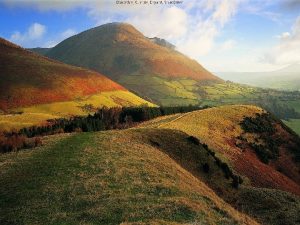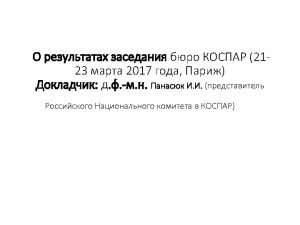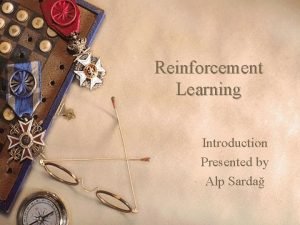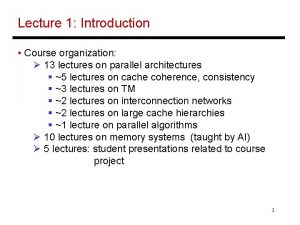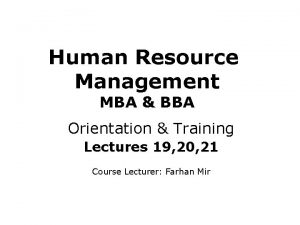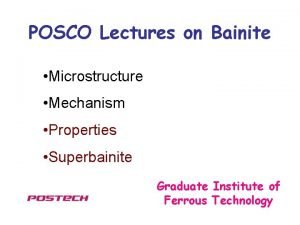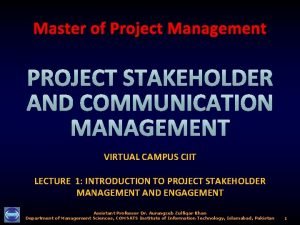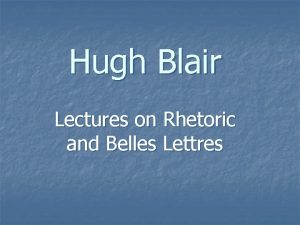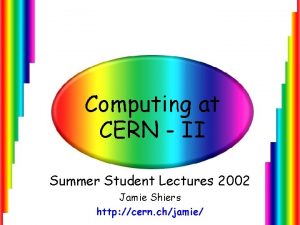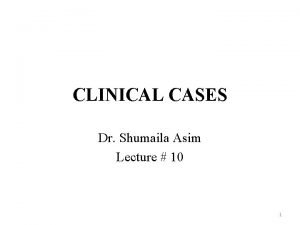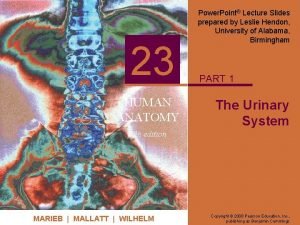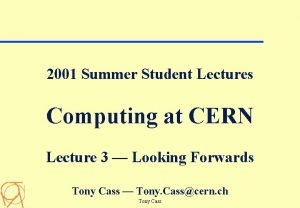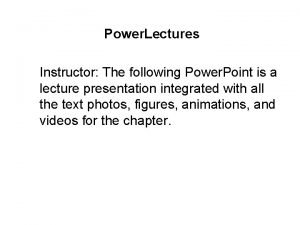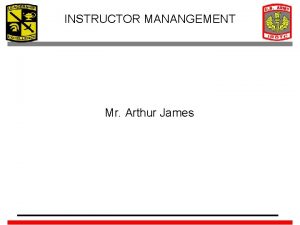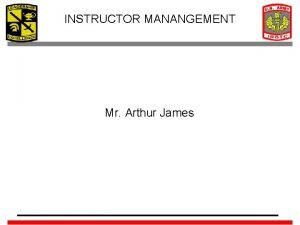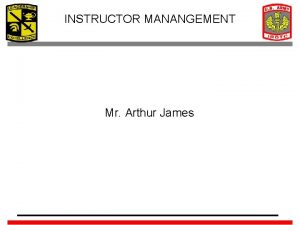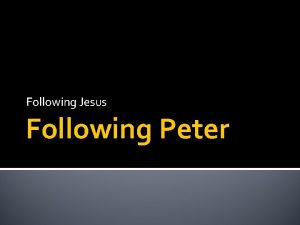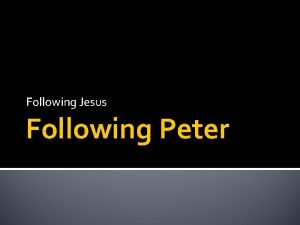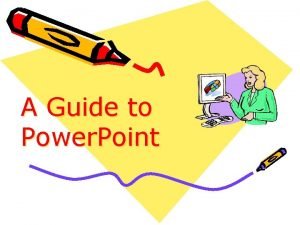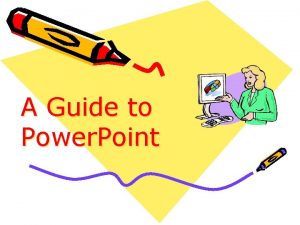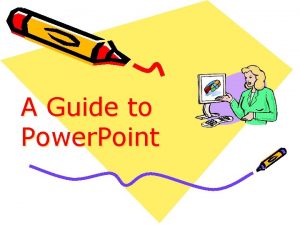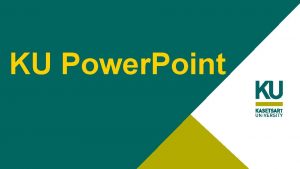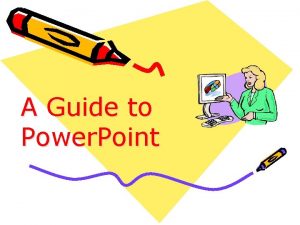Power Lectures Instructor The following Power Point is

































































- Slides: 65

Power. Lectures Instructor: The following Power. Point is a lecture presentation integrated with all the text photos, figures, animations, and videos for the chapter.

Power. Lectures It is strongly recommended that you run the provided Power. Lecture presentation from the Power. Lecture DVD, in order for animations and videos to run properly.

Power. Lectures If you choose to copy the presentation from the DVD and run it without the Power. Lecture DVD inserted, you will need to copy the associated animation and video files for the chapter onto your classroom computer in order for those slides to work properly.

Go to the DVD drive directory containing the Power. Lecture DVD, then to the folder Media. Then in the Power. Lecture folder, copy the nested chapter folder to your computer. Each chapter folder contains the Power. Lecture Power. Point file(s), and animation and video folders.

Power. Lecture: Chapter 1 Learning About Human Biology

Learning Objectives Ø List features that distinguish living organisms from nonliving matter. Ø Describe the general pattern of energy flow through Earth’s life forms, and explain how Earth’s resources are used again and again (cycled). Ø Explain the interdependency that exists among organisms. Ø List the steps of the scientific method of inquiry and use an example to illustrate.

Learning Objectives (cont’d) Ø Define the word “theory” as correctly used in science. Ø Understand as well as you can what limitations are imposed on science and scientists. Ø Explain the importance of alternative hypotheses and control groups in scientific experimentation.

Impacts/Issues What Kind of World Do We Live In?

What Kind of World Do We Live In? Current world events seem chaotic. Ø l l l Infectious diseases such as “bird flu” pose global threats. Natural disasters cause widespread devastation. Human activities greatly affect our environment.

What Kind of World Do We Live In? Despite the chaos, we have tools available to help us meet these challenges. Ø l l Systematic observation allows us to ask questions and find answers. Scientific investigation helps us to understand our place in the world.

Video: Bird Flu CLICK TO PLAY Ø From ABC News, Environmental Science in the Headlines, 2005 DVD.

Useful References for Impacts/Issues The latest references for topics covered in this section can be found at the book companion website. Log in to the book’s e-resources page at www. thomsonedu. com to access Info. Trac articles. Ø U. S. EPA: Global Warming Site Ø Info. Trac: The Great Plague. Rene Skelton. National Geographic World, Mar. 1999. Ø Info. Trac: Avian Flu: Why All the Squawk? Linda S. Nield. Consultant, Feb. 1, 2006.

How Would You Vote? To conduct an instant in-class survey using a classroom response system, access the “Join. In Clicker Content” from the Power. Lecture main menu. Ø Should the United States provide funding to help preserve the reefs? l l a. Yes: Without readily available green products and services, converting to a sustainable society is unrealistic. b. Not entirely: I'm doing what I can to improve sustainability, including recycling and using less energy.

Useful References for How Would You Vote? The latest references for topics covered in this section can be found at the book companion website. Log in to the book’s e-resources page at www. thomsonedu. com to access Info. Trac articles. Ø Info. Trac: Should the Arabian (Persian) Gulf become a marine sanctuary? Oceanus, Fall 1993 v 36 n 3 p 53(10). Ø NCDC: Regional Perspectives: Seas of the Middle East

Section 1 The Characteristics of Life

The Characteristics of Life Ø Living and nonliving things share common characteristics, such as being composed of atoms, the smallest units of natural substances.

The Characteristics of Life Living things, though, have many distinctive features: Ø l l l Living things take in and use energy and materials. Living things sense and respond to specific changes in their environment. Living things reproduce and grow. Living things consist of one or more cells. Living things maintain homeostasis (dynamic balance). Figure 1. 1

Useful References for Section 1 The latest references for topics covered in this section can be found at the book companion website. Log in to the book’s e-resources page at www. thomsonedu. com to access Info. Trac articles. Ø PBS: DNA Ø Info. Trac: The Meaning of Life. Lin Chao. Bio. Science, Mar. 2000. Ø Info. Trac: The Mystery of Life. Carl Sagan. UNESCO Courier, Sept. 1984.

Section 2 Our Place in the Natural World

Our Place in the Natural World Humans have evolved over time. Ø l l Human beings are a part of biological evolution—the change in organisms through the generations. Humans are mammals belonging to the animal kingdom, one of the four kingdoms of life in the domain Eukarya. Figure 1. 2

Animation: Life's Diversity CLICK TO PLAY

Our Place in the Natural World Humans are related to all other organisms— and humans also have some distinctive features. Ø l l Humans share characteristics with our closest primate relatives. Humans also have distinctive features: increased dexterity, large brain, analytical skills, sophisticated communication, and culture. Figure 1. 3

Animation: Building Blocks of Life CLICK TO PLAY

Video: Earliest Homo Sapiens Ø This video clip is available in CNN Today Videos for Biology, 2004, Volume VIII. Instructors, contact your local sales representative to order this volume, while supplies last.

Useful References for Section 2 The latest references for topics covered in this section can be found at the book companion website. Log in to the book’s e-resources page at www. thomsonedu. com to access Info. Trac articles. Ø Info. Trac: The Human Genus. Bernard Wood, Mark Collard. Science, April 2, 1999. Ø Info. Trac: A Tale Told by DNA. Nell Boyce. U. S. News & World Report, Dec. 16, 2002.

Section 3 Life’s Organization

Life’s Organization Life is organized on many levels. Ø l l l Atoms and molecules are nonliving materials from which all of nature is built. Cells are organized into increasingly complex levels: tissues >>> organ systems >>> organisms. Organisms, in turn, form populations >>> communities >>> ecosystems >>> biosphere.


Animation: Levels of organization CLICK TO PLAY

Levels of Organization in Nature Figure 1. 4

Fig. 1. 4, p. 4 -5

Fig. 1. 4, p. 4 -5

Life’s Organization Organisms are connected through the flow of energy and cycling of materials. Ø l Energy flows from the sun. • • • l Plants (“producers”) trap this energy by photosynthesis. Animals (“consumers”) feed on the stored energy in plants, using cellular respiration. Bacteria and fungi (“decomposers”) break down the biological molecules of other organisms in order to recycle raw materials. All organisms are part of webs that depend on one another for energy and raw materials.

Flow of Energy and Cycling of Materials in the Biosphere Figure 1. 5

Video: Biodiversity Ø This video clip is available in CNN Today Videos for Environmental Science, 2003, Volume VI. Instructors, contact your local sales representative to order this volume, while supplies last.

Useful References for Section 3 The latest references for topics covered in this section can be found at the book companion website. Log in to the book’s e-resources page at www. thomsonedu. com to access Info. Trac articles. Ø Ecological Society of America Ø Info. Trac: Lost at Sea: Coral Reefs, Considered the ‘Rainforests’ of the Marine World, Now Have Even More in Common with Those Fragile Ecosystems. Scott Kirkwood. National Parks, Spring 2006.

Section 4 Science Is a Way of Learning about the Natural World

Science Is a Way of Learning about the Natural World Science is an approach to gathering knowledge. Ø l Biology, like all science, pursues a methodical search for information that reveals the secrets of the natural world. Figure 1. 6

Science Is a Way of Learning about the Natural World l Explanations are sought using an approach known as the scientific method: • Observe some aspect of the natural world and ask a question. • Develop hypotheses (educated guesses) using all known information. • Predict what the outcome would be if the hypothesis is valid. • Test the hypothesis by experiments, models, and observations. • Repeat the tests for consistency. • Analyze and report objectively on the tests and conclusions.


Animation: Example of the Scientific Method CLICK TO PLAY

Fig. 1. 7 b, p. 7

Hypothesis Olestra® causes intestinal cramps. Prediction People who eat potato chips made with Olestra will be more likely to get intestinal cramps than those who eat potato chips made without Olestra. Experiment Control Group Eats regular potato chips Results 93 of 529 people 89 of 563 people get cramps later (17. 6%) (15. 8%) Experimental Group Eats Olestra potato chips Conclusion Percentages are about equal. People who eat potato chips made with Olestra are just as likely to get intestinal cramps as those who eat potato chips made without Olestra. These results do not support the hypothesis. Stepped Art Fig. 1. 7 b, p. 7

Science Is a Way of Learning about the Natural World Experiments are major scientific tools. Ø l Experiments involve tests in which conditions are carefully controlled. • • l Control groups are used to identify side effects during a test that involves an experimental group. The experimental group experiences all of the same conditions as the control except for the variable being studied. The sample size must be large enough to be representative of the whole.

Animation: Sampling Error CLICK TO PLAY

Sampling Error Figure 1. 12

Science Is a Way of Learning about the Natural World Science is an ongoing enterprise. Ø l l Single experiments rarely provide concrete answers. Not all science is performed by conducting experiments.

Useful References for Section 4 The latest references for topics covered in this section can be found at the book companion website. Log in to the book’s e-resources page at www. thomsonedu. com to access Info. Trac articles. National Health Museum: Discovery, Chance, and the Scientific Method Ø Info. Trac: Water Saver: Could a Population Boom Cause a Decline in One Bay’s Water Quality? Mona Chiang. Science World, Sept. 19, 2005. Ø Info. Trac: The Real Method of Scientific Discovery …Often Involves a Creative, Imaginative Leap. Burton S. Guttman. Skeptical Inquirer, Jan. –Feb. 2004. Ø

Section 5 Cancer, Broccoli, and Mighty Mice

Cancer, Broccoli, and Mighty Mice Ø Researchers discovered that sulforaphane in broccoli could reduce cancers in mice. Ø However, they also learned that the body’s own defenses play a vital role. Figure 1. 8

Useful References for Section 5 The latest references for topics covered in this section can be found at the book companion website. Log in to the book’s e-resources page at www. thomsonedu. com to access Info. Trac articles. Ø Cancer Research Institute: Cervical Cancer Vaccine Approved Ø Info. Trac: My Life as a Guinea Pig: Clinical Trials Are Inherently Risky, But One Saved Me. Jamie Reno. Newsweek, Aug. 6, 2001. Ø Info. Trac: Anti-cancer Veggies. Natural Life, May–June 2006.

Section 6 Science in Perspective

Science in Perspective A scientific theory explains a large number of observations. Ø l l A theory is a related set of hypotheses that form a broad-ranging explanation of many phenomena. Theories are accepted or rejected on the basis of tests and are subject to revision. Scientists must be content with relative certainty, which becomes stronger as more repetitions are made. Scientists must be prepared to change their minds in light of new evidence.

Science in Perspective Ø Science has limits. l l Science is limited to questions that can be tested; subjective questions do not readily lend themselves to scientific analysis or experiments. Science has the potential to be used for controversial endeavors, which means that all of society must commit to responsible use of scientific knowledge. Figure 1. 9

Fig. 1. 9 b, p. 9

Video: Smog Pollution Ø This video clip is available in CNN Today Videos for Environmental Science, 2004, Volume VII. Instructors, contact your local sales representative to order this volume, while supplies last.

Useful References for Section 6 The latest references for topics covered in this section can be found at the book companion website. Log in to the book’s e-resources page at www. thomsonedu. com to access Info. Trac articles. American Journal of Bioethics PBS: NOVA—The Stem Cell Debate Info. Trac: Scientists at War. Leif J. Robinson. Odyssey, Feb. 2002. Ø Info. Trac: Above All, Do No Harm. Stephen Jay Gould. Natural History, Oct. 1998. Ø Info. Trac: Bioethics and the Stem Cell Research Debate. Robyn S. Shapiro. Social Education, May– June 2006. Ø Ø Ø

Section 7 Critical Thinking in Science and Life

Critical Thinking in Science and Life Critical thinking is an objective evaluation of information. Ø Consider the source. Ø l l Let credible scientific evidence, not opinions or hearsay, do the convincing. Question credentials and motives. Evaluate the content. Ø l l Be able to distinguish between cause and correlation. Separate facts from opinions.

Figure 1. 10

Useful References for Section 7 The latest references for topics covered in this section can be found at the book companion website. Log in to the book’s e-resources page at www. thomsonedu. com to access Info. Trac articles. Ø Scientific American: Smart People Believe Weird Things Ø Info. Trac: Question Authority: Kids Need to Be Skeptical of the Curriculum. It’s the Only Way to Develop a Balanced View of the World. Glenn De. Voogd. School Library Journal, April 2006.

Section 8 Are Herbal Supplements Safe?

Are Herbal Supplements Safe? Controversy surrounds the use of herbal supplements. Ø l l Ø Some supplements have been linked to harm in humans. Other supplements have been shown to offer no biologically observed effect. Rigorous testing of supplements is currently being undertaken by the National Institute of Health and others. Figure 1. 11

Video: Ephedra Dangers Ø This video clip is available in CNN Today Videos for Biology, 2003, Volume VII. Instructors, contact your local sales representative to order this volume, while supplies last.

Useful References for Section 8 The latest references for topics covered in this section can be found at the book companion website. Log in to the book’s e-resources page at www. thomsonedu. com to access Info. Trac articles. Ø U. S. FDA: Dietary Supplements Ø Info. Trac: Any Science Behind the Hype of ‘Natural’ Dietary Supplements? Teri Capriotti. Dermatology Nursing, Oct. 2005. Ø Info. Trac: Ephedra/Ephedrine Dangers. David Nicklin. Patient Care for the Nurse Practitioner, June 2003.
 Power system lectures
Power system lectures Point point power
Point point power Rick trebino
Rick trebino Lectures paediatrics
Lectures paediatrics Data mining lectures
Data mining lectures Medicinal chemistry lectures
Medicinal chemistry lectures Orthopedic ppt lectures
Orthopedic ppt lectures Ludic space
Ludic space Activity planning software project management
Activity planning software project management Cell and molecular biology lectures
Cell and molecular biology lectures Radio astronomy lectures
Radio astronomy lectures Dr sohail lectures
Dr sohail lectures Utilities and energy lectures
Utilities and energy lectures Introduction to web engineering
Introduction to web engineering Do words have power
Do words have power Frcr physics lectures
Frcr physics lectures Frcr physics lectures
Frcr physics lectures Cs106b lectures
Cs106b lectures Guyton physiology lectures
Guyton physiology lectures What is aerodynamics
What is aerodynamics Theory of translation lectures
Theory of translation lectures Theory of translation lectures
Theory of translation lectures Theory of translation lectures
Theory of translation lectures Digital logic design lectures
Digital logic design lectures Compsci 453
Compsci 453 Hegel romantic art
Hegel romantic art Nuclear medicine lectures
Nuclear medicine lectures Gpoint c++
Gpoint c++ Cdeep lectures
Cdeep lectures Oral communication 3 lectures text
Oral communication 3 lectures text C programming lectures
C programming lectures Haematology lectures
Haematology lectures Bureau of lectures
Bureau of lectures Slagle lecture
Slagle lecture Theory of translation lectures
Theory of translation lectures Reinforcement learning lectures
Reinforcement learning lectures 13 lectures
13 lectures Reinforcement learning lectures
Reinforcement learning lectures Bba lectures
Bba lectures Medical emergency student lectures
Medical emergency student lectures Medical student hematology lectures
Medical student hematology lectures Stratog online lectures
Stratog online lectures Bhadeshia lectures
Bhadeshia lectures Yelena bogdan md
Yelena bogdan md Comsats virtual campus lectures
Comsats virtual campus lectures Hugh blair lectures on rhetoric
Hugh blair lectures on rhetoric Cern summer student lectures
Cern summer student lectures Pathology lectures for medical students
Pathology lectures for medical students Dr asim lectures
Dr asim lectures Ota resident lectures
Ota resident lectures Anatomy lectures powerpoint
Anatomy lectures powerpoint Cern summer school lectures
Cern summer school lectures Informsu
Informsu Tipos de instructor
Tipos de instructor Basic instructor course texas
Basic instructor course texas Basic instructor course texas
Basic instructor course texas Basic instructor course tcole
Basic instructor course tcole Pepperball training manual
Pepperball training manual Neither of my two suitcases is adequate for this trip
Neither of my two suitcases is adequate for this trip Instructor vs teacher
Instructor vs teacher Cisco certified trainer
Cisco certified trainer Mptc firearms instructor
Mptc firearms instructor Basic instructor course #1014
Basic instructor course #1014 Basic instructor course texas
Basic instructor course texas Virtual instructor art
Virtual instructor art Nfpa 1403 instructor to student ratio
Nfpa 1403 instructor to student ratio































